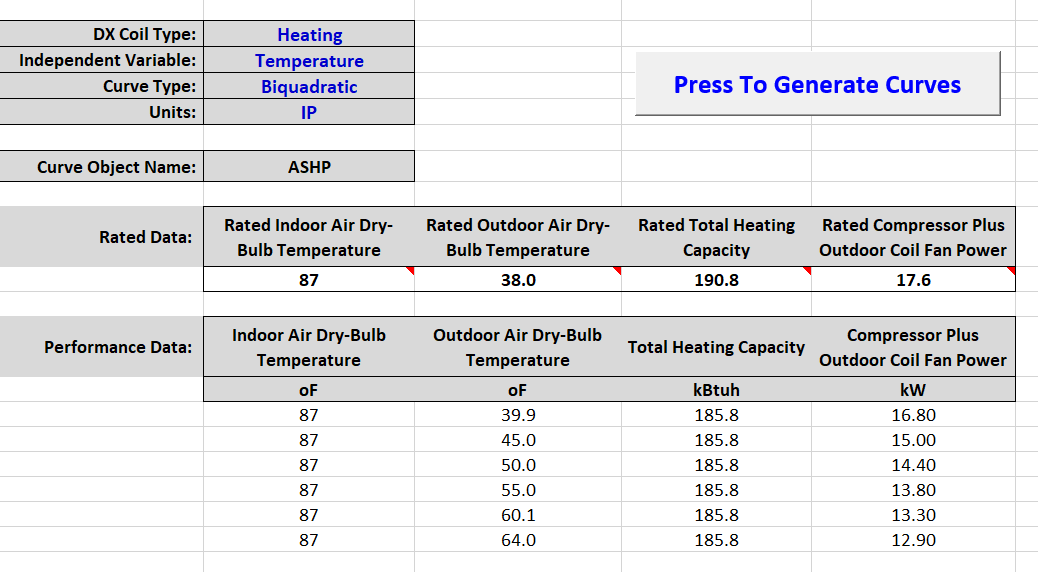The curve fit tool can be used for any biquadratic curve, you just have to enter the data according to the fundamental equation.
For the Coil:WaterHeating:AirToWaterHeatPump:Pumped object:
A9 , \field Evaporator Air Temperature Type for Curve Objects
\type choice
\key DryBulbTemperature
\key WetBulbTemperature
\default WetBulbTemperature
\note Determines temperature type for heating capacity curves and
\note heating COP curves. This input determines whether
\note the inlet air dry-bulb or wet-bulb temperature is used to evaluate these curves.
A10, \field Heating Capacity Function of Temperature Curve Name
\note Heating capacity modifier curve (function of temperature) should be biquadratic or cubic.
\note Biquadratic curve = a + b(ta) + c(ta)^2 + d(tw) + e(tw)^2 + f(ta)(tw).
\note Cubic curve = a + b(ta) + c(ta)^2 + d(ta)^3.
\note ta = evaporator inlet air [dry-bulb or wet-bulb] temperature (C).
\note tw = condenser inlet water temperature (C).
So you would enter:
ta - evap inlet air temp in the first column (regardless of what the column heading says)
tw - cond inlet water temp in the second column (regardless of what the column heading says)
The fact that the Total Heating Capacity does not vary with changes in tw will cause the regression to fail, however, I would think you would get a constant of 185.8 with all 0's, not all 0's. But I haven't done this in some time. Try adjusting the Total Heating Capacity just a little to see if the 0's problem disappears.






I have the same question. The Indoor Air Dry-Bulb Temperature does not apply to a
WaterHeater:HeatPump, can we set the supply water temperature and receive reasonable results?